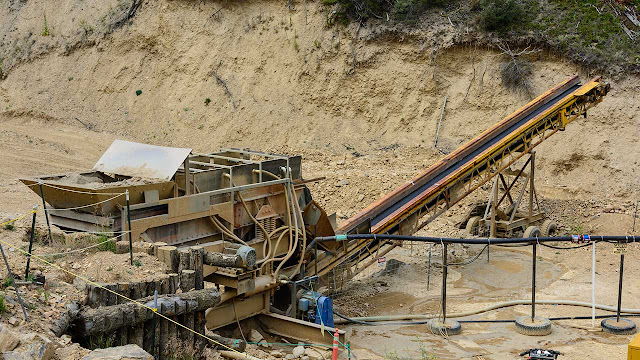INTRODUCTION
Of all the sapphire deposits found in Montana, the richest is in the Rock Creek (Gem Mountain) district. Between 1890 and the 1930s, over 65 tonnes of rough sapphire were recovered from this area and continuously supplied Switzerland’s watchmaking industry until the introduction of synthetic sapphire in the late 1930s.
For the first time in the past 120 years, the rich sapphire-bearing land in this area is owned by a single entity. To witness the beginning of a new era of sapphire mining in Montana and gain a full understanding of this operation, a GIA team visited the new Rock Creek sapphire mine in early August.
For the first time in the past 120 years, the rich sapphire-bearing land in this area is owned by a single entity. To witness the beginning of a new era of sapphire mining in Montana and gain a full understanding of this operation, a GIA team visited the new Rock Creek sapphire mine in early August.
A BRIEF HISTORY
Sapphire was originally discovered in the Rock Creek area during gold exploration in the late 1800s, like many Montana sapphire deposits—gold mining was extremely popular in the area at the time. Since the climax of sapphire mining, boosted by demand from the watchmaking industry, local sapphire mining has largely supported the sapphire-oriented jewelry businesses in Philipsburg and the fee-paying sapphire hunters.
In 2011 the current mine owner, Potentate Mining, purchased the Eureka Gulch property on the north side of Gem Mountain and in 2014 finished purchasing the land on the south side. Today the company owns about 3,000 acres of sapphire-producing land in this historically important mining area.
GEOLOGY AND MINING OPERATION
Sapphire deposits in the Gem Mountain area are all secondary deposits. While a lot of rough was recovered from the riverbed, it is also contained in mudflow. Mudflow is a rapid mass wasting process caused by a large amount of precipitation in short periods. Intense, fast erosion always accompanies mudflows; mudflow deposits are poorly sorted mixtures of silt, boulders, organic materials, and other debris. The sapphire and gold deposit in Eureka Gulch clearly shows the poorly sorted mudflow on top of weathered slate or phyllite bedrock that belongs to the Mesoproterozoic Belt Supergroup. Much of the sapphire district is underlain by Eocene rhyolite lava flows and associated volcanic rocks (Berg, 2014).
The frosted and etched surfaces of many rough Rock Creek sapphires indicated that they are xenocrysts brought by magma carriers during volcanic eruptions. An outcrop chemically proved to be alkali basalt discovered about 3 miles (5 km) away from the mine is regarded by Potentate’s president, Dr. Keith Barron, as a possible carrier. Results from ground magnetometer survey also hint that there might be mafic igneous rocks below the surface. All observations and test results make Dr. Barron confident that there are still plenty of sapphires on the property. The old-time miners worked mainly on the gulches since they had to mine hydraulically; the lower the area, the easier it was to get enough water pressure. Instead of searching the gullies and gulches, Potentate test mined the area between the gulches and the tops of the hills and saw promising production.
THE STONE
Sapphire rough found in the new mining claim ranges in size from 2 mm to 1 inch. The largest stone that has been recovered is about 30 ct. The rough stones are very rounded, with very typical magmatic resorbed surface features. Approximately 13 to 15 percent of Sapphire Gulch production is of natural color, and about 8 to 12 percent is of natural fancy colors.
With the perfection of heat treatment in the late 1980s and early 1990s, Rock Creek sapphire saw more and more potential since the stones react very well to the heating method developed by Emmett and Douthit. On site the GIA team saw faceted sapphire of different colors.





















0 comments: